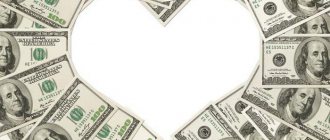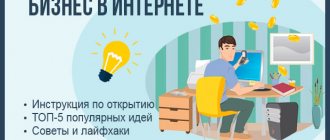25.02.2015
Financial independence
Views: 8,860
Add a comment
Every person strives not only to earn good money, but also, ideally, to not have to go to work at all, while still receiving money. The good news is that by becoming a financially independent person, you can not only allow yourself to forget about work, but also receive a stable, guaranteed income. The path to financial independence begins with adopting the 2G law for yourself.
Why is financial independence needed?
If you ask any person the question: “Do you need money?”, then all the answers can be reduced to two main options: “Yes, and the more the better” or “This is not the main thing in life.” The first answer is sincere, the second is philosophical, modestly keeping silent about the fact that you need to eat every day, and food in the store is not given for free.
After some reflection on the role of finance in an individual’s life, the banal truth inevitably arises that “Money makes a person free.” In the sense, free to make decisions. If someone has a lot of money, then he can look for a job until he finds a job he likes and that pays well, rather than having to run to where there are vacancies. He can do business or paint, travel or lie on the couch. He has a choice, and the more money, the wider the range.
But, if the above statement is correct, then the opposite should also be true - “Lack of money turns a person into a slave.” This does not mean slavery in its classical sense. There is simply no choice without money. You have to live as circumstances dictate. Get the first job you come across, often with unloved responsibilities, a bastard team, an idiot boss and a meager salary. So what to do? There is no time to look for something better; you need to buy bread today. This is how people live - they eat cheaper products, relax in the country with a hoe in their hands, travel on public transport - and every time there is an advertisement on TV, they suppress dull irritation in their souls.
How to determine in each specific case at what point on the scale a person is: closer to the extreme point “Free”, or near the opposite pole “Slave”? Very easy if you don't look at the amount of cash in your wallet. Who can be called free? i.e., financially independent? Only those who, having stopped going to work, are able to maintain their previous standard of living for some time.
So, for how long he can maintain this same level, having lost his usual income - that is how free he is, no more. For many people, it’s not bad at all if this period is three months or six months.
But, ideally, such a period should last until the end of life. This is absolute financial freedom, implying the widest possible decision-making opportunities. That is, for example, I am working now, but this is not because I need money for my daily bread, but because I want it so much. If I get tired of work, or if I don’t like my boss, I’ll quit. And the family will not suffer from this financially.
The above formula can be reversed. Let everyone look at themselves from the outside and think how free they are in making decisions? Can he leave a job he doesn’t like, buy a car he likes, take his family on vacation to a place he’s long wanted to go, etc.? Freedom of decision-making is directly proportional to financial independence. If there is no such freedom, then a person is a slave of circumstances.
Well, okay, in theory everything looks nice, but in practice? How can someone who doesn’t have rich parents become financially independent? And, in general, what can ensure this financial independence?
Let's start with the second question. Financial independence can be achieved by a source of money that does not require effort and resources (except for the initial organizational stage). This is called passive income. This option became possible after the collapse of the socialist system and the transition to a market system.
In some cases, the process of organizing passive income is simplified to the limit. For example, when inheriting a metropolitan apartment. I don’t want to sell it, but I also have a place to live. As a result, the decision is made to rent out the apartment. After its implementation (there are some subtleties, you need to consult and insure, but now we are not talking about that), the owner begins to receive a monthly income.
But what about the rest, not everyone gets an apartment as an inheritance? There is only one way out - to create a source of passive income yourself! To do this, you need to start investing. There are three main options:
— purchase of real estate for the purpose of its subsequent rental;
— acquisition of securities (bonds, shares, mutual funds (UIFs) or other forms of trust management with minimal initial contributions, etc.);
— investing in “someone else’s” business to make a profit, without direct participation in its activities.
Purchasing currency or bank deposits are not investments. These are means not of making money, but of saving it. A serious bank sets such interest rates on deposits as to compensate for losses from inflation, and no more. We won’t even talk about financial pyramids and other types of fraud.
At this point, the person reading the article would like to say: how many decades, given our earnings and prices, will it take to create passive income? And in general, if it’s so good, then why isn’t everyone doing it? So, the main (although not the only) reason why “not everyone is doing this” is the economic illiteracy of the population. It's not a fault, it's a problem. It will take significantly longer to change mentality than has already passed since 1985.
Then why in the West, where people are more economically advanced, are citizens not investing en masse? The answer is simple. First of all, who said they don’t do it? Secondly, it takes much longer to gain financial independence there than in the vastness of the former Union. Because the percentage of annual income on passive investments is much lower than ours. Here is an example of the main “Western” investment options, German and American:
The Germans are thorough people. They are never in a hurry. A person chooses investments that bring 6% of annual income (the emphasis is on stability, at the expense of profit), begins to invest 1/8 of his earnings in them, and after 27 years (taking into account compound interest) gains financial independence.
The American is not happy with this. His investment project will bring 12% of annual income, he will contribute a quarter of his earnings there and in 12 years he will become completely financially independent.
Our situation is completely different. In the former republics of the USSR you can find investment options with returns from 20 to 50% per annum! Therefore, an ordinary young family can become financially independent in just 5 years. If you don't believe me, pick up a calculator. Below is the specific calculation, you can check each step.
It doesn't matter what country our hypothetical newlyweds live in. The main thing is what the source data looks like in absolute numbers. We will count money in dollars, the values of income and wages will be as close as possible to real ones. Those who wish can then recalculate at the current exchange rate for the currency of their state.
Basic steps to become a financially independent person
Any path to becoming a financially independent person leads to the ability to save money!
- Starting capital can be accumulated by saving. But you should study your budget and make a list of what you can give up without compromising your health and standard of living. For example, it will only be beneficial if you quit smoking and do not spend money on cigarettes or an extra bottle of beer. Giving up a trip to a cafe, a taxi ride, an expensive gadget, or super-fashionable clothes will also not be harmful.
- It is believed that in order to effectively accumulate funds, each person can easily afford to give up 10% of their regular income and 50% of random or unexpected income. You can gradually, with an increase in your income (passive, additional or active), increase the amount of savings - up to 30%. As a little advice: accumulated funds should be kept not at home, but in a bank account - this way you will save yourself from the temptation to use them for other purposes and earn money on interest. Moreover, you don’t have to remove them - let them drip towards the total amount.
But the most important rule is regularity! We decided to start saving - we set aside a certain amount every month! Even more, unexpected income appeared - everything went into the piggy bank!
Regardless of your income, it is important to be able to save it!
So, a husband and wife receive $1,000 monthly between them.
From the day they decide to achieve financial independence, they begin to save a quarter of their salary in order to invest it with a yield of 30% per year. According to young people, the remaining $750 is enough for them to live a normal (in their understanding) life.
$250 will be saved per month, per year – 12 x $250 = $3000. Now we need to take into account compound interest. Each amount begins to work for a young family from the moment it is invested. That is, the first payment gives a profit of 12 months, the second – 11, the third – 10, etc. If you do the math, you get the same figure as if you put the entire amount at half interest: $3,000 x 15% = $450. In total, by the end of the first year, the family will have the amount (contributions + compound interest): $3000 + $450 = $3450.
Why is this especially important for women?
Because here the issue is more acute than among men. It is simply more difficult for a woman to achieve financial independence, and here's why.
- Employers are more willing to hire men Employers have become less likely to pay attention to the marital status of applicants, but gender preferences remain. To compete in such a situation, women are forced to accept less. When competing with men for jobs, women accept wages that are lower than market wages. On average, they earn 30% Russian women are paid 30% less than men in the same positions with the same responsibilities. The reasons for this are not only gender stereotypes, but also gender-related circumstances, which are discussed below. They also make women financially vulnerable on their own.
- Only 2% decide to take maternity leave. Every fiftieth father in Russia takes paternity leave; women more often go on maternity leave. As a result, it is she who loses 60% of her earnings for a year and a half, and then, until the child is three years old, she is left with no income at all. In addition, during maternity leave you can seriously “sag” in your career, since in the 21st century this is a huge period for the development of many industries.
- Traditionally, it is believed that the husband is the breadwinner, and the wife is the keeper of the hearth. Contrary to expectations, this does not mean that the latter are sitting on the necks of the former. In Russia, 74.4% of working-age women and 80.3% of men work - the difference is small. But women are often expected to easily sacrifice their careers for the sake of their husband’s employment if he is offered a move, and not to stay late at work in order to cope with household chores. They are the ones who stay home if a child is sick. All this is reflected in the salary.
- And again traditions: it is considered unacceptable if the woman in a couple earns more than the man. Often it is precisely such attitudes that significantly limit career growth. And at various trainings, women are even persuaded to quit right now, because working is not their true purpose and in general it’s bad.
Total: $21345.15 + $6403.55 + $3450 = $31198.7.
So, the investment period is over! Now let's see what happened in the end. As we remember, five years ago our newlyweds decided that $750 a month would be enough for them to “live.”
The return on invested capital is:
- for the year: $31198.7 x 30% = $9359.61;
- per month: $9359.61: 12 = $779.97.
Young people have achieved their goal! Moreover, they achieved this in just 5 years. (But many of us work for 30–40 years and have nothing like this). Now they have a choice. You can continue to work, receiving a total income of $1,750 for your family. Or you don’t have to work at all; the problem of “a piece of bread” will never loom before your eyes again. There is also the option to work and continue investing, increasing your passive income in order to stop at a higher level.
But if people have a choice, it means they have become free! Moreover, until the end of his life.
By the way, in the above example, only the share of the salary that is invested and the percentage of profit matter. It doesn’t matter at all from what total amount this part is taken. If, as in the above example, it is from $1000, then it is $250. And if from $5000, then it will be $1250. In any case, with a share of ¼ and a 30% return, it will take no more than 5 years to achieve real financial independence.
Well, okay, we sorted it out. But you still need to know where to invest your money in order to get just such a return, from 20 to 50% per year. The decision depends on the amount that can be allocated for investment:
- from one hundred thousand dollars - the best option seems to be the purchase of commercial real estate and its subsequent rental (premises for shops or offices);
- from ten to one hundred thousand dollars - purchasing an apartment for renting it out or purchasing securities through trust management companies;
- from one hundred to several thousand dollars - you can choose mutual funds, PAMM accounts or something similar, their profitability is just within the above-mentioned values.
In conclusion, what exactly needs to be done?
Any long road begins with the first step. We must decide that the old way of life is a dead end. Fundamental changes are needed regarding generating passive income. This is the most important thing; without such a decision, everything else makes no sense.
1. Understand your financing options.
2. Depending on the possibilities, choose a method of investing money.
3. When determining a specific area for investing funds (premises for purchase, mutual fund, PAMM account, etc.), use the recommendations of those who have studied the issue in practice and have serious experience (one of the lists of “proven” managers with a profitability of 3 – 4% per month or 36 - 42% per annum can be found on my blog, see PAMM reports).
After developing a strategic plan (points 1 – 3), start taking action!
I have prepared an Excel template for you where you can enter your initial data and get a plan for calculating your financial independence.
Tip 1: Work harder
Contrary to the prevailing stereotype, to truly become a successful and rich person, you will have to work hard. Various videos and books on self-development insist that you can do practically nothing and still earn huge amounts of money. Examples include successful billionaires who seemingly achieved unprecedented success only by believing in a miracle. But this is completely misleading. No one ever talks about how hard such people worked at the beginning of their journey. Read the article: “What mistakes do successful people not make?”
Financial independence is, first of all, selfless work, but not thoughtless work. Simply going to a job you don’t like twice as often and then suffering from overwork is a dead end.
You need to organize your own business, develop your skills in making money, acquire useful connections, set goals for yourself, and then achieve them. By gaining a good pace, you can achieve the first results in just one year.
An example is sports. Let's imagine a runner who trains three times a week for 2 hours, and at the same time shows relatively good results. If an unprepared person is forced to engage in sports in the same mode, he will definitely not achieve success, since he was initially unprepared. It is in many years of intensive training that the secret lies. For the first 5–10 years, the runner watched his diet, trained hard, competed, and now he just needs to maintain his athletic shape.
Invest money
When you have paid off your debts, cut down unnecessary expenses and learned to save, move on to the next stage. It lies in the fact that not only do you work for money, but they also work for you. Of course, you don’t need to invest your own money in everything. You can immediately discard dubious projects that you are not confident in and do not understand or do not understand yet. The main goal of a good investor is to receive a stable income on a regular basis, and not to be content with instant earnings through speculation.
Bodo Schaefer and his book “The Path to Financial Freedom”
It’s not for nothing that the author is called “financial Mozart,” because his strategies are so ingenious and masterly that they help initially change consciousness and then gain financial freedom. Playing with knowledge, as if conducting an orchestra, the author makes us understand the nature of debts and how to deal with them, names specific tools for investing and teaches financial responsibility. The last point is extremely important, because being free, we ourselves are responsible for our actions, financial independence is no exception, therefore, if you do not have money, then only you yourself can correct the situation by finding a better job, additional income or investing in something. then for the purpose of dividends.
Financial freedom has no beginning and end, it is a certain character, a certain lifestyle. Among the main tools in achieving and maintaining such a state is the desire to earn more and not sit in one place, to look for not only open but also alternative paths, for example, those that crypto-millionaires have developed for themselves, an article about which is on my GQ Blog. Read and leave your reviews.
Traditionally, I wish you not only to achieve this freedom, but also to extend it for years, constantly increasing and realizing your needs and income.
Author Ganesa K.
A professional investor with 5 years of experience working with various financial instruments, runs his own blog and advises investors. Own effective methods and information support for investments.
Set specific financial goals
First of all, decide to simply become a successful person. Remember that your financial independence is the result of an individual and deliberate decision that no one has the right to judge or belittle. After creating an emotional mood, you can move on to planning goals.
It is very important to understand that a financial goal is not an abstract dream that is impossible to achieve. You must set yourself high, but achievable goals, determine specific deadlines and ways to complete them one after another. As a goal, take saving money every month for a specific amount or investing a specific share of funds in your favorite business. Save at least 10% of your income. In 3-4 months you will see how your interest in saving money will awaken.
Stages
A little more about the stages you need to go through on the path to financial freedom.
Stage 1. If a person is in a financial hole, the first step is to move from this state to financial instability. To do this, you will need to get rid of debt, which can be achieved using two money management options:
- austerity. In this situation, you will need to save on everything;
- increase in active income. You will need to increase your income by changing your job to a higher paying one, looking for additional work and earnings, making money on the Internet, etc.
Stage 2. When a person has paid off all his debts and his income is equal to his expenses, he cannot relax. One wrong step can quickly lead you back into a financial hole. Now we will need to move from financial instability to stability. This stage is considered very important, since, having crossed it, a person overcomes the poverty line. At this stage it is necessary:
- continue to increase active income, creating new sources of profit;
- create reserve funds that can help out in case of emergencies;
- accumulate savings, gradually strengthening your material assets and acquiring everything you need for life;
- learn how to properly plan your personal budget.
At this stage, passive income will gradually begin to appear, which will bring savings in bank accounts. The stage can last for quite a long period of time (up to several years), but during this time a solid base of material and monetary assets is created, thanks to which it will be difficult to go back.
Stage 3. At this final stage, financial stability must transition into financial independence. In other words, this period can be called transitional from active sources of income to passive ones. For this you will need:
- creating personal capital, that is, preparing funds for investment;
- creating sources of passive income. You should not invest all your capital in one project, it is very risky. Sources of income should be as diversified as possible;
- gradual transition from active income to passive income.










